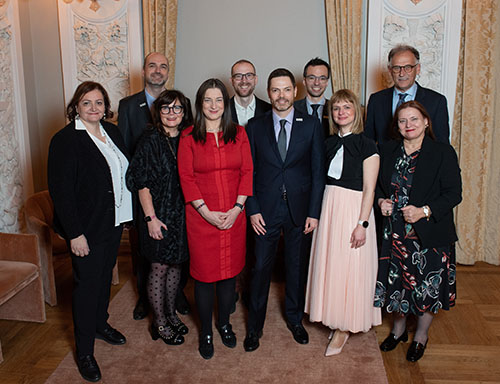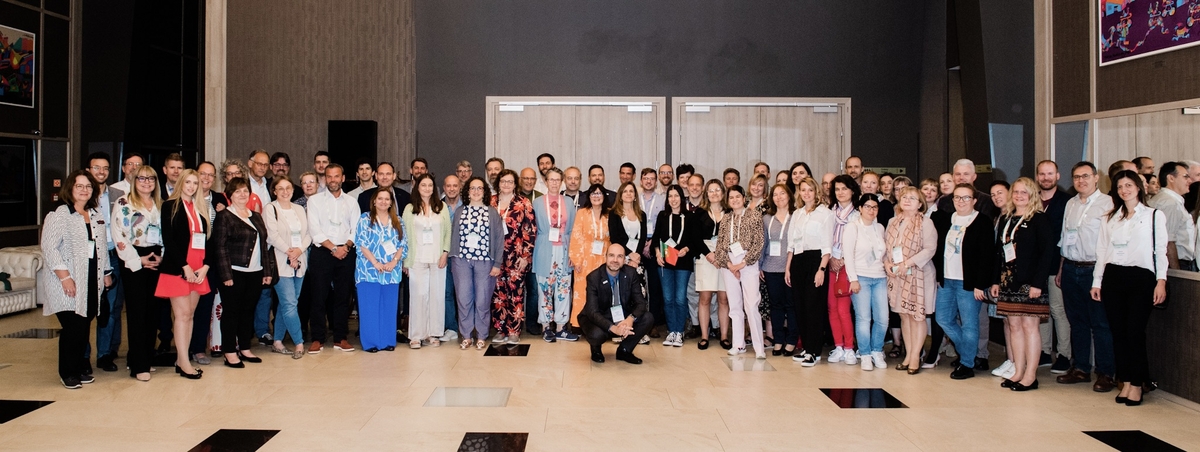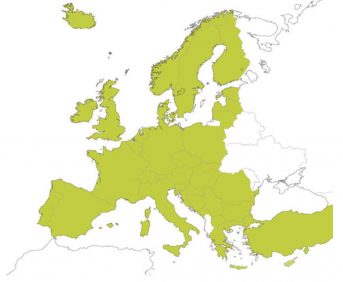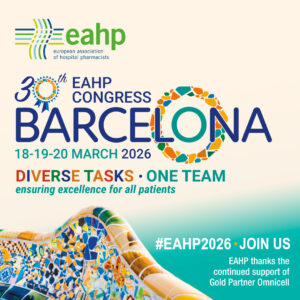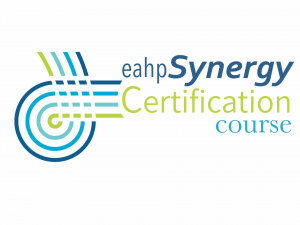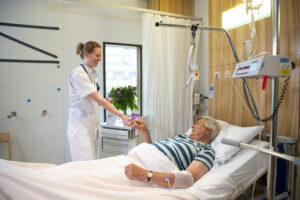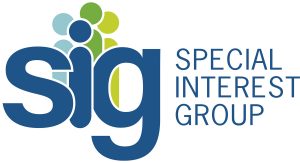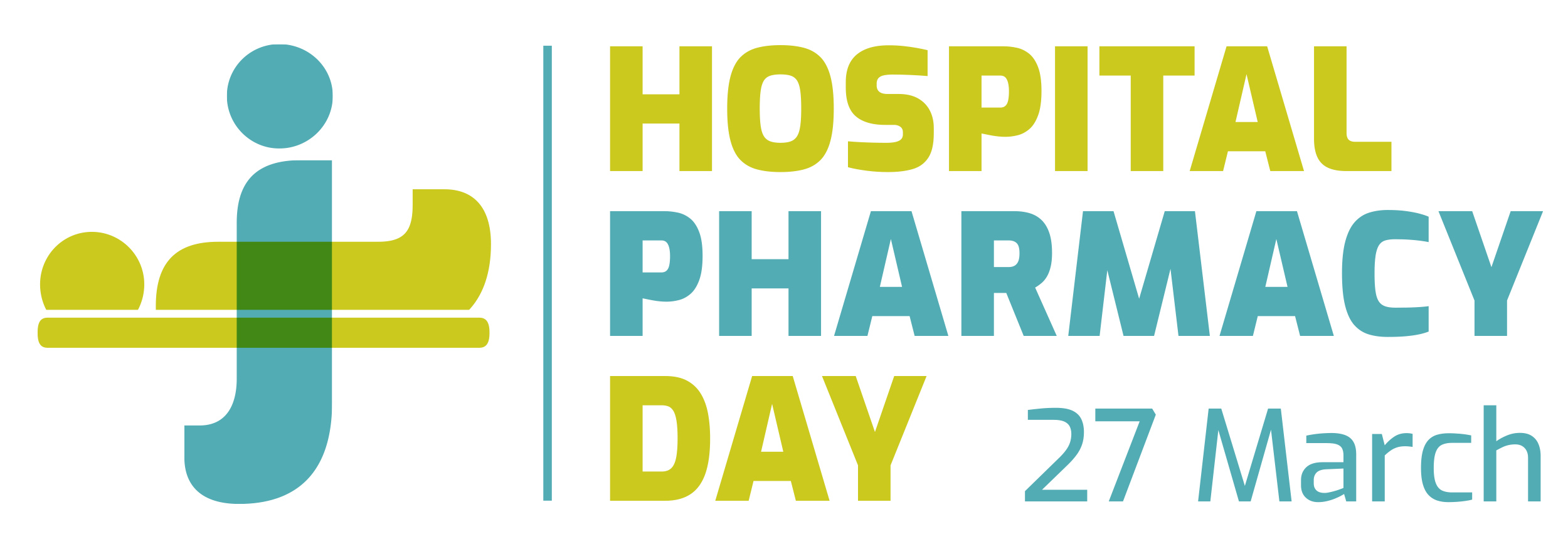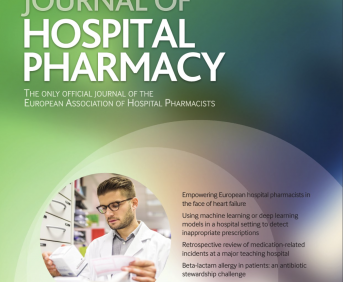Implementation of a standardised parenteral nutrition solution on a neonatal ward
Pdf

European Statement
Patient Safety and Quality Assurance
Author(s)
Isabelle Sommer, Farshid Sadeghipour
Why was it done?
PN can be composed of 14 different ingredients, including an amino acids admixture. Therefore, PN represents a complex and high risk preparation. Medication errors (ME) are often related to PN management and may include prescription, transcription, preparation, and administration errors. As the treatment with PN is essential for a good cerebral and neurologic development and a postnatal weight gain, ME can result in growth retardation, developmental disturbances, and infections. The implementation of the standardised PN aimed to achieve a reduction of ME having an impact on vulnerable newborns and to improve the security and quality of their nutritional treatment.
What was done?
A multidisciplinary development of a hospital’s neonatology and pharmacy departments as well as of an industrial manufacturer resulted in a standardised parenteral nutrition (PN) solution for neonatal patients. This PN solution was implemented as “standard-of-care” for newborn term and preterm infants requiring nutritional treatment within their first days of life.
How was it done?
The standardised PN solution for a peripheral administration route was developed in accordance with ESPGHAN guidelines (2018).
The neonatologists defined internal guidelines for the PN administration and trained the concerned personnel (physicians and nurses).
The industrial manufacturer delivered the ready-to-use PN solution as a sterile double-chamber infusion bag in accordance with Swiss and European regulatory.
What has been achieved?
The ready-to-use PN solution with a 24/7 availability on ward by means of an 18 months stability at room temperature allowed a considerable reduction (-80%) of on ward preparation of nutritional solutions by nurses.
One-third of individual PN solutions being prepared at the hospital’s pharmacy has been replaced by the standardised PN solution.
This high-quality PN solution allows a secured administration to the vulnerable patients as well as a reduction of ME related the whole PN management resulting in an improvement of the nutritional treatment of neonates and its outcomes on their development.
What next?
This special PN solution is already implemented in two Swiss university hospitals and others will follow. Further standardised PN for a central venous administration to neonates need to be developed to allow the completion of a safe nutritional treatment. On ward PN preparations must be prohibited to prevent undetectable ME.
“Clinical research helpdesk”: an active support for investigators in a large university hospital
Pdf

European Statement
Clinical Pharmacy Services
Author(s)
Roberto Brunoro, Mariassunta Miscio, Girolama Iadicicco, Lorenzo Codato, Domenica Condello, Elisa Danieli, Viola Donadello, Alice Osto, Federica Pace, Giulia Valente, Francesca Venturini
Why was it done?
In our Italian University Hospital, we established the “Clinical Research Helpdesk” managed by the Clinical Research Unit. According to a daily schedule all personnel with an active role in clinical research can reserve an appointment with a pharmacist and administrative staff to ask questions for the submission of the necessary documentation for the Ethics Committee (EC) and for the evaluation of the study feasibility.
What was done?
In our Italian University Hospital, we established the “Clinical Research Helpdesk” managed by the Clinical Research Unit. According to a daily schedule all personnel with an active role in clinical research can reserve an appointment with a pharmacist and administrative staff to ask question for the submission of the necessary documentation for the Ethics Committee (EC) and for the evaluation of the study feasibility
How was it done?
The schedule is a Google Calendar tool which permits to generate slots of appointments. Researchers can access it by a link spread during a presentation event of the initiative. At each appointment the presence of a pharmacist for scientific counselling and a member of the EC scientific secretariat is guaranteed.
What has been achieved?
Since March 2022 the helpdesk accounts for 120 appointments with an average of 17 appointments/month. Typical questions are related to documental forms clinical trials rules and regulation counselling; in the last period support was requested also for practical issues, e.g., CE marking for investigational medical devices, feasibility evaluation, contract agreement and informed consent. After the helpdesk activation, the processing time for all the evaluation steps from the document presentation until EC submission, decreased by 50% compared to the previous year. The service increased study submission: the requests for evaluation of interventional studies received by the helpdesk increased by 15%, whilst for observational studies the percentage increase was 10%.
What next?
We are planning to expand this service to reach a complete management of clinical trials introducing a “RedCap team”, consisting of clinical pharmacists and biostatisticians who will help researchers in study design, Clinical Research Forms (CRFs) creation, statistical evaluation and data interpretation. A legal team for legal issues and contract agreement counselling will also be offered. The aim is to increase the visibility of our hospital, making it more attractive for clinical research.
A 3-Year transformation of a Belgian clinical trial pharmacy team
Pdf

European Statement
Education and Research
Author(s)
Marie Coenen, Stefanie Goris, Thomas De Rijdt, Isabel Spriet
Why was it done?
These changes were necessitated by the increasing number of (complex) clinical trials conducted at UHL. This Belgian 1995-bed, tertiary care hospital constitutes an attractive setting for clinical trials and a coveted partner for sponsors, due to its specialisation in a wide range of medical fields to treat complex pathologies. Adopting the changing research field whilst ensuring the highest regulatory compliance was challenging.
What was done?
Since 3 years, the clinical trial team of the University Hospitals Leuven (UHL) pharmacy has gone through several metamorphoses. These were realised by introducing an activity based costing (ABC) model enabling financing of staff expansion, extension of the infrastructure, and extensive digitalisation.
How was it done?
In 2016, an ABC-analysis was conducted by the Belgian Association of Hospital Pharmacists to determine the cost of various pharmacy activities within a clinical trial. In 2019, the outcome of the analysis was revised to concur the fast-growing clinical research field.
To affirm the need to apply these updated prices, a retrospective evaluation was performed in 2020 documenting the number of clinical trial protocols, pharmacy staffing and applied prices over the past 4 years.
What has been achieved?
Rapid growth of pharmacy research activities was shown by an increase in the total number of active clinical trial protocols from 964 in 2017 to 1256 in 2020. Until then, quantitative expansion was not followed by qualitative growth since staffing remained steady at 13 full-time equivalents (FTE) and the applied costs were outdated and not cost-effective. To enable this transition, an up-to-date pharmacy budget table was developed based on the latest ABC-analysis and, along with an estimate of future income, approved by the hospital board in 2020. This allowed the pharmacy research staff to be reinforced to 19 FTE and the infrastructure to be extended to integrate extra storage capacity and research dedicated clean rooms. Starting from 2021, the budget table was implemented into practice using computerised support enabling automated billing.
What next?
Future directions include further digitalisation by automating accountability and compounding and focusing on qualitative growth by advancing the role of clinical trial pharmacists into a specialised member of the hospital research development team and of the clinical pharmacy team.
Optimising the process for incoming requests for new extemporaneous products
Pdf

European Statement
Production and Compounding
Author(s)
Mette Lethan, Tove Hansen, Louise Rasmussen Duckert, Trine Schnor
Why was it done?
In the clinic, a need for a NEP, as either a change in an existing product or a new formulation, may arise. Requests are risk assessed by the Hospital Pharmacy Drug Information Centre (DIC) before production is initiated. However, there was no clear process for handling requests, resulting in prolonged process times. NEP may require searching for new raw materials, new packaging or developing of a new formulation, which are time consuming tasks. Therefore, the wish to optimise the process arose.
What was done?
A procedure for handling requests for new extemporaneous products (NEP) in a Good Manufacturing Practice (GMP) regulated production was developed to improve success rate and aligning the process.
How was it done?
A small unit was formed with the purpose of handling requests for NEP. The unit consists of academics employed in the production department with expert knowledge about both sterile and non-sterile production.
A standard operating procedure was formed, in collaboration with DIC, which included a form, to be filled out with information needed for handling the request. This includes drug formulation, strength and dosage, along with any specific requirements.
The unit evaluates the request – is it possible for us to manufacture, sterile or non-sterile, are raw materials available in appropriate quality, analysis requirements, and stability of the product. The evaluation is made in communication with departments like Purchasing, Quality Control/Assurance, Stability as well as the relevant production department.
If a positive outcome, the request is given to the production department, to finalise production. If the outcome is negative a rejection is sent to the requester with a reason.
What has been achieved?
Based on data from the last three years, we now know how many requests we receive, which type of products are requested, processing times, and which products were made and why/why not.
There is a clear path of communication into the pharmacy and between relevant departments, ensuring that essential pharmaceuticals will be developed in a timely manner or a justified rejection is sent enabling the clinic to look for alternatives.
What next?
Some products are difficult to handle, such as cytostatics, antibodies and hormones. Next step is to investigate these product types.
Optimised and sustainable distribution and handling of medicines to psychiatric outpatients
Pdf

European Statement
Patient Safety and Quality Assurance
Author(s)
Louise Stilling Rasmussen, Lene Juhl Biltsted, Majken Nørskov Petersen
Why was it done?
To implement EAHP statements on Patient Safety and Quality Assurance the hospital pharmacist carried out the intervention in one of the largest psychiatric clinics in the region. The following challenges were observed: Lack of transparency for healthcare professionals. Inflexible and time consuming workflow which did not accommodate the needs in the medical treatment at the clinic. The workflow caused waste of medicine. Changes in the medical treatment, which caused medicine being surplus and ended up expiring. The distribution was expensive and not sustainable.
What was done?
By changing the handling and distribution of medication for psychiatric patients who are entitled to free medicine from the hospital, we now have an agile, streamlined, patient-safe and transparent workflow that ensures patient safety by accommodation of the seven rights, increases the flexibility and availability of medicine to the patient’s current treatment and gives a more sustainable handling of medicine. Furthermore, resulted in direct and indirect financial savings (estimated direct savings 8%, DKK 250,000).
How was it done?
A medication room was reorganised by the pharmacist according to ATC codes, shelf fronts, active ingredients and expiry date.
Establishment of a computer and scanner, linked to the national Shared Medication Record containing all patients’ prescriptions.
Medicine is ordered online from the hospital pharmacy.
What has been achieved?
New modern quality assured medication room with electronic registration of medicines dispensed to the patients. This provides transparency of the medical treatment across the healthcare sector. The medicines are stored correctly, and the integrity is maintained until immediate use and permit correct administration. Elimination of medication waste and reduced time consumption for healthcare personnel gave an estimated direct savings of approx. DKK 250,000 plus an uncalculated saving of staff time. Finally, a more sustainable management of medicines and reduced the risk of errors regarding medical distribution was achieved.
What next?
The results of this project have scaling potential. A presentation for decision-makers about implementing the solution elsewhere is ongoing. The handling and distribution has been changed from patient-labelled medication to secure digital registration of the medication dispensing from the medicine room, which now allows complete traceability of all medicines dispensed by the pharmacy.
Establishing a medicine donation circuit for non-governmental organisations at a pharmaceutical service in the Basque country (Spain)
Pdf

European Statement
Selection, Procurement and Distribution
Author(s)
Ariadna Martin Torrente , Itziar Palacios Zabalza, María Olatz Ibarra Barrueta, Maialen Palacios Filardo, Garazi Miron Elorriaga
Why was it done?
To optimise the functioning and the management of the procedures and an accessible and effective communication system in the PS. Moreover, the quality of the shipment is guaranteed all the time. The development of a circuit has allowed being faster and more efficient during its preparation than before.
What was done?
Establishing the circuit of execution, preparation, distribution, and delivery of medicine to Non-Governmental Organisations (NGO) from the Pharmaceutical Service (PS) of a tertiary hospital in the Basque Country (Spain). The circuit has been designed taking into account the criteria in a context of humanitarian donations, published and updated by the Spanish Agency of Drugs and Sanitary Products (AEMPS) on 16 March 2022
How was it done?
Since it has been included in the daily activity of the service it has cause and increase its amount of work, hence, daily routine tasks have been slowed down, given the increase of petitions the hospital has had during last year. However, its creation has allowed being faster and more efficient during its preparation.
The circuit begins with the request of NGO, which has to be authorised by the hospital’s directory. Then, in the procedure participate pharmacists; pharmacy technicians and office clerks who prepare the donation rely on the personalised list that the donation has created. Once, the necessary documents are filled out and they are sent to the AEMPS.
What has been achieved?
From November 2021 to September 2022, 7 donations have been carried out; these contained 100 active ingredients, concretely 15.198 units. We could find most of them in the WHO model lists of essential medicines. The NGO’s destinations have been Guatemala, Romania, Ukraine and Senegal. The medications sent most according to the ATC classification were 21% anti-infective medicines, 17% cardiovascular, 13% nervous system, 12% systemic hormonal preparations and 3% alimentary tract and metabolism.
What next?
The project is easily enforceable in any Spanish PS that is willing to process a donation at any given occasion. Some of our ideas for the future are the creation of a standard list including common medications, avoiding personalised lists, in addition to connect it to our internal programme to be faster when preparing the donation.
DEVELOPMENT OF A PROTOCOL TO STANDARDISE CELL-BASED MEDICINAL PRODUCTS HANDLING IN AN ONCO-HAEMATOLOGY CLINICAL TRIALS UNIT
Pdf

European Statement
Patient Safety and Quality Assurance
Author(s)
JOSE MANUEL DEL RIO GUTIERREZ, EUGENIA SERRAMONTMANY MORANTE, SARA GIMENEZ GINER, PILAR ROVIRA TORRES, PATRICIA GARCIA ORTEGA, CARLOTA VARON GALCERA, ISABEL CIDONCHA MUÑOZ, MARIA QUERALT GORGAS TORNER
Why was it done?
One of the most important challenges we currently face is the increase of clinical trials (CTs) including CBMPs. These drugs require special storage, preparation, delivery and administration; so developing standard operating procedures (SOPs) and ensuring proper coordination between all professionals involved, including pharmacists, is essential.
What was done?
Management of cell-based medicinal products (CBMPs) was protocolised in an onco-haematology clinical trials unit.
How was it done?
Pharmacists, doctors and nurses participate in a multidisciplinary team to standardise CBMPs handling. The following protocol was agreed:
1.The entire multidisciplinary team is notified when a CBMP prescription is planned to ensure proper coordination.
2.The CBMP is manufactured by the CT sponsor. Then, it is transferred to the blood bank for cryopreservation. CBMPs usually require a temperature between -80ºC and -200ºC and expire in some weeks.
3.Before CBMP administration, patients undergo lymphodepletion. The lymphodepletion regimen is performed according to the CT protocol or arranged between medical and pharmacy teams. Chemotherapy, serum therapy and antiemetic regimen are discussed and specified.
4.Once the treatment is prescribed, it is verified by a pharmacist who ensures its suitability.
5.On the infusion day, the blood bank delivers the CBMP. Then, a pharmacist checks if it arrives in proper condition and it is defrosted. The pharmacy department reconditions the CBMP in another infusion bag or syringe if required. This is the most critical point because CBMP expires after some minutes of defrosting, requiring extensive coordination.
6.CBMP is administered according to the CT protocol.
What has been achieved?
72 patients were recruited in 15 CT. 8 of them use as CBMP Chimeric Antigen Receptor T-Cells (CAR-T-CELLS), 4 Specific Peptide-Enhanced Affinity Receptor T-Cells (SPEAR-T-CELLS), 2 Tumour-Infiltrating Lymphocytes (TILs) and one cytokine-stimulated Natural-Killer-Cells (CS-NK-CELLS). Seven assays are intended for haematological neoplasms and eight for solid malignant neoplasms. One assay requires CBMP syringe reconditioning in the pharmacy department.
The described process optimises CBMPs handling, avoids delays in administration and reduces the risk of misuse.
What next?
CBMPs represent a novel therapy, and pharmacists have an essential role in developing new procedures to incorporate them into clinical practice. This protocol may be helpful for other centres to implement guidelines to work with CBMPs.
Development of standard kits with utensils for outpatient parenteral antibiotic therapy
Pdf

European Statement
Production and Compounding
Author(s)
Louise Rasmussen Duckert, Marianne Kjettrup Jensen, Mette Lethan, Trine Schnor
Why was it done?
The hospital pharmacy wishes to support the implementation of OPAT and during the process the need for standardised kits with utensils was identified. The availability of kits with necessary utensils for aseptic handling of parenteral infusion would simplify and standardise the work for hospital and home nurses. Considerations regarding patient safety and sustainability were also in favour of the kits, as choice of utensils could secure compliance to regional guidelines considering use of closed systems and rinse of the line after infusion. Kits containing the exact needed utensils for an administration also reduces the possible waste.
What was done?
The hospital pharmacy has composed standard kits with utensils for outpatient parenteral antibiotic therapy (OPAT).
How was it done?
The kit is composed in collaboration between the pharmacy, hospital nurses and home nurses. The best suited infusion set was chosen – a closed system with two spikes for antibiotic mixing and infusion. Hereby nurses avoid direct contact with antibiotics and avoid antibiotic aerosols in the citizen’s home. The infusion set contains no PVC, phthalates or latex. When fully emptied the infusion set can be discarded as regular waste.
The kit also contains a sterile cover for the workstation, sterile ethanol swabs, gloves, pre-filled saline syringes for rinse of the line after infusion and a written manual. All is packed and labelled by the hospital pharmacy and lot numbers are registered for traceability.
What has been achieved?
The kits have been tested in selected municipalities and the content of the kit has been adjusted. As a result of the feedback a film has been recorded showing the handling of the infusion set. The video is used for training and a QR code on the written manual guides the home nurse to the video if needed. The kit is now used widely in the region and response is positive. With the set-up being identical in all municipalities in the region, handling antibiotics and utensils is simpler for the hospital nurse at discharge.
What next?
As the number of patients in home-based OPAT rises, experiences with the kits will probably result in wishes for adjustments. A new kit with utensils for changing PVK is under development.
Improving people living with HIV therapies compliance: a practical tool customised for patients and designed by hospital pharmacists
Pdf

European Statement
Patient Safety and Quality Assurance
Author(s)
Sabrina Trivellato, Daniele Mengato, Maria Mazzitelli, Anna Maria Cattelan, Francesca Venturini
Why was it done?
An optimal compliance is an essential requirement for people living with HIV (PLWHA) to grant drugs effectiveness and safety. Given the complexity of the therapeutic regimen, and the multiple changes to it due to the clinical status, compliance to therapy may be suboptimal. Patients who are not well educated on how to follow their therapy are more keen on quitting the treatment or facing virological failure. According to previous analysis, we reported that 120 patients out of more than 1500 managed by our centre experienced suboptimal adherence to therapy.
What was done?
We created a user-friendly tool to educate HIV-patients on their drugs’ adherence in our University Hospital.
How was it done?
We studied every drug prescribed in our centre and we analysed it from the patient’s point of view. The question we aimed to answer was: “If I were a PLWHA, what would help me assuming the correct drug, at the proper time, avoiding misunderstandings?”. We analysed the shape, colour and dimensions of both the package and the pills/capsules. We focused on the most appropriate way to take every drug and we investigated possible interactions with OTC drugs or dietary supplements.
What has been achieved?
A poster reporting all the drugs available in our formulary was developed: 34 medicines were described in alphabetical order, specifying for each one the image of the package, the usual dosage, the picture of the pill/capsule compared to the dimension of current coins and special warnings about possible drug-drug interactions. We also adopted practical symbols to indicate whether to assume the drug with or without food. The poster became available starting from April 2022 and during the following 5 months a cohort of 960 patients could rely on it.
What next?
In order to help our patients taking their therapies, we expect to get a digital form of this poster to make it available on the phone scanning a QR code. Alongside, we aim to enlarge and improve this digital version by adding a final section with an interactive survey to closely monitor the compliance of the patients and help them to improve it. Through this project we could also obtain an active pharmacovigilance setting.
Removing false beta-lactam allergy warnings: role of the clinical pharmacist in collaboration with the allergology service
Pdf

European Statement
Clinical Pharmacy Services
Author(s)
Carlos Santos Rodríguez, Silvia Irene Corrales Vargas, Maria de los Ángeles Peña Peloche, Alfredo Julian Jover Sáenz, Miguel Ángel Ramos Gil, Arturo Morales Portillo, Marta Mir Cros, Francisco Ignacio Torres Bondia, Lluis Marqués Amat, Joan Antoni Schoenenberger Arnaiz
Why was it done?
Beta-lactam antibiotics are the most commonly used group of antimicrobial drugs but are also the ones with the most significant induction of allergic reactions. However, it is known that many of these patients do not present reactions upon rechallenge or have false allergy warnings in the medical records.
What was done?
To assess the impact of a pharmacist-driven programme for active beta-lactam allergy warning removal in adults in collaboration with the Allergology service.
How was it done?
We identified adults with active beta-lactam allergy warnings among outpatients aged 35 to 45 years over 26 months.
Both in the hospital and primary care setting the pharmacist assessed the current information of the cases in the electronic medical records (EMR) and through personal interviews or by telephone. The following data were retrieved: year of allergy registration, type of reaction described, tolerance of beta-lactam antibiotics, and the existence of Allergology reports.
The pharmacist, previously trained by the Allergology service, could proceed to remove or confirm the allergy label, if applicable, or refer the patient to the Allergology service for allergy tests.
What has been achieved?
We reviewed a total of 1178 cases with active beta-lactam allergy warnings. The most frequently implicated beta-lactam drug was amoxicillin, with 170/1178 (14.4%) cases.
111/1178 (9.4%) of cases had an allergic reaction in childhood, and in 714/1178 cases (60.6%) EMR did not describe the symptomatology or treatment that justifies the allergy.
The allergy warning was directly removed in 93/1178 (7.9%) of patients, as they had previous reports of Allergology, had tolerated antibiotics after the allergic reaction, or did not present symptoms compatible with an allergic reaction.
The review confirmed allergic warnings in 43/1178 (3.65%) cases, according to the symptomatology and the information recorded in the Allergology reports.
One thousand and forty-two cases were referred for beta-lactam allergy test performance in the allergology service, of which 47% yielded a negative result.
What next?
The pharmacist is qualified to remove the warning in cases with a doubtful allergy to beta-lactam antibiotics after a thorough medical record review and informed consent. Moreover, the pharmacist can provide valuable information that allows the classification of warnings according to the detected risk and facilitates subsequent decision-making by the allergist.
